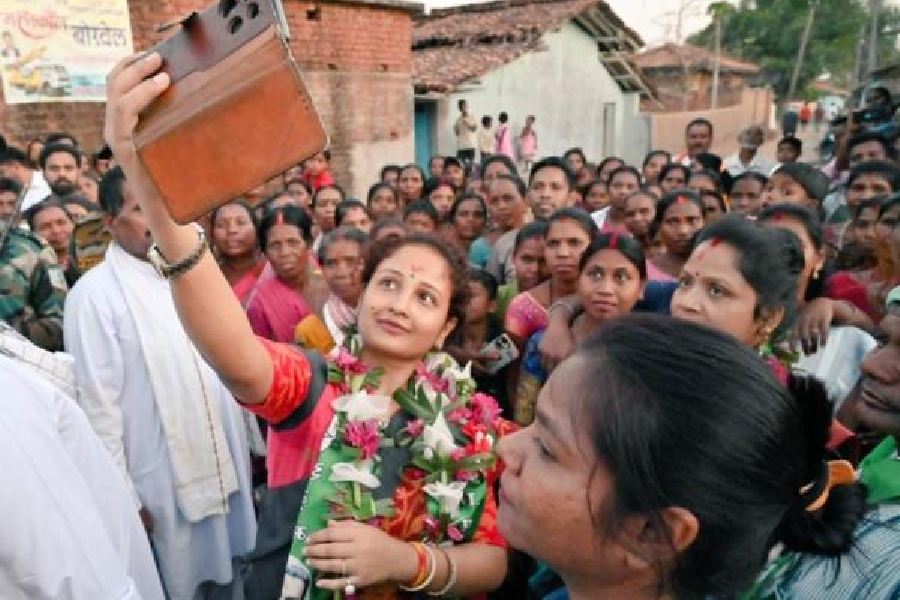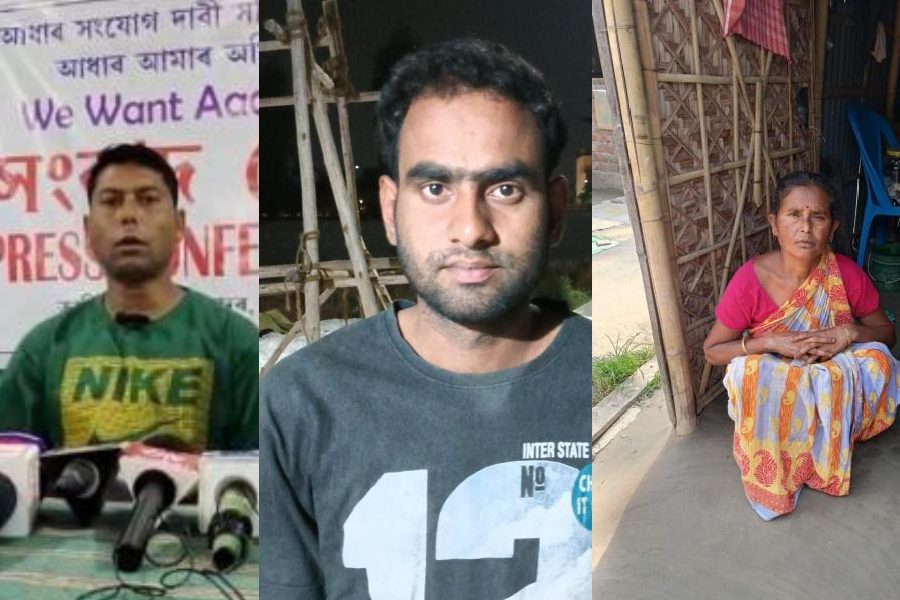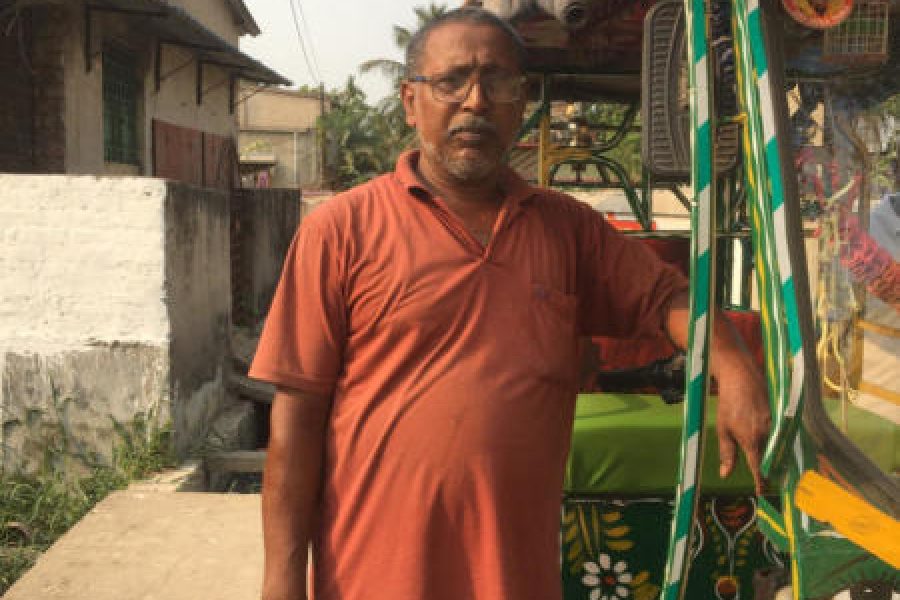The Bharatiya Janata Party’s pitch for the Uttar Pradesh elections is development, welfarism and law and order. The masthead of my newspaper today features an advertisement with photos of Narendra Modi and Yogi Adityanath that talks up the state government’s achievement in building expressways.
A series of reports by Arunabh Saikia in Scroll on public opinion in UP in the run-up to the polls suggests that discontent about rising prices, shortages, the lack of jobs and the nuisance of stray cattle has been offset by subsidies in cash and kind, a feeling that street goonery has been curbed, Muslims and Yadavs firmly put in their place, and a widespread sense that the BJP is less casteist than its principal rival, the Samajwadi Party. That Adityanath’s government is seen as more inclusive than its predecessors shouldn’t be a surprise: a government frankly committed to Hindu primacy can use a broad communalist idiom instead of the more sectional vocabulary of caste.
The catastrophic dysfunction of the UP government during the second wave of the pandemic should have some bearing on how it is assessed by the state’s voters, but that depends on whether people see Covid mortality as a natural disaster or a man-made one. Historically, there is reason to believe that populations the world over saw the influenza pandemic of 1918 as a natural calamity. This would be one explanation for the world’s collective amnesia about that tragedy.
The Bengal famine of 1943 is the subject of countless films, books and memoirs. The indictment of Winston Churchill as a heartless racist rests substantially on his indifference to the plight of starving Bengalis at the time. People tend to remember the tragedies they can blame someone for and forget those that seem, like earthquakes or epidemics, to be beyond human control.
It isn’t inconceivable that the nightmarish stories of patients in the state dying for lack of oxygen might be filed away in the public mind under ‘act of god’ and forgotten. It’s worth remembering that the very idea of ‘public health’ is a relatively recent one. In a state like UP, where there is no realistic expectation that the government will assume responsibility for the health of its citizens, it isn’t clear that its failure to do so during the pandemic will damage the ruling party politically. The Opposition will have to build a political narrative around the government’s responsibility for the collapse of the public health system and its role in encouraging a super-spreader event like the Kumbh Mela. It can’t simply assume that the experience of tragedy will turn voters against the ruling party.
The UP election and the general election that will happen later in 2024 can be seen as natural experiments designed to test the relationship between material well-being, majoritarian feeling and electoral performance. There isn’t much argument about the economic performance of the Modi government. By nearly every reasonable metric — growth, inflation, employment — the economy has done badly. The material misery inflicted on poor Indians by that first lockdown, vividly captured in photos of the urban poor walking hundreds of miles to their home villages, should have a bearing on the way in which people vote. However, performative idiocy doesn’t automatically incur electoral penalties: the BJP won a resounding second mandate on the back of demonetization.
This raises an obvious question: have Modi, Adityanath and the sangh parivar radicalized the electorate to the extent that the prospect of Hindu primacy trumps other considerations, including material well-being? Given the number of factors that go into making a voting decision and a legislative majority, this is a hard question to answer. The first instinct of the social scientist must be to say no because for more than a hundred years, social science explanations have, in one way or another, been materialist. How could you even begin to test the thesis that charismatic politicians have simplified politics in a country as massively diverse as India into anti-minority, especially anti-Muslim, bigotry?
In the absence of definitive answers, one way of approaching this question would be to examine the rhetoric of political leaders. In his speeches, Adityanath certainly seems to assume that majoritarianism works. An interesting example of the way in which he melds a welfarist pitch with frank communalism is the speech in September where he touted his government’s success in distributing rations. Earlier, according to Adityanath, rations had been swallowed by people who said ‘abba jaan’ (read Muslims), now they were available to everyone. Even as he talks up the inclusiveness of his government, he underlines it by singling out Muslims as undeserving beneficiaries.
Arunabh Saikia writes that one factor that favours Adityanath is the widespread feeling that he has put swaggering Muslims, pandered to by earlier governments in UP, in their place. This is an integral part of the popular perception that law and order has improved on his watch. The fact that a third of the alleged criminals killed in police ‘encounters’ have been Muslims perversely helps to cement the BJP’s claim that it is the only political party that doesn’t ‘appease’ Muslims because it doesn’t court their votes.
The high command of the BJP certainly believes that uncompromising hostility to Muslims is the party’s unique selling point. Why else would it parade Adityanath in elections as far afield as Kerala? Adityanath, even more than Modi, represents the sangh parivar’s visceral loathing of Muslims. His sullenness, his unvarnished prejudices, his history of vigilantism, his provincialism, make it clear that the only political commodity he has to offer is twenty-four-carat majoritarianism. If his government were to be re-elected in the forthcoming elections with a substantial majority, would it show that the BJP has made ground in achieving its goal: a radicalized, minority-hating majority?
It would certainly show that there is a critical mass of voters willing to overlook the BJP’s communal policies and provocations while making their electoral decisions. More importantly, it would encourage politicians, journalists, opinion-makers, social media influencers, business people and policy mavens to factor majoritarianism into their decisions and personas. We already see this happening in the sycophancy of most television news anchors, newspapers editors and corporate leaders.
If enough people buy into the idea that the Indian electorate has been reconstituted by majoritarian feeling, it becomes a self-fulfilling prophecy. Public opinion is a bit like the stock market: your take on it helps change its reality. The hate conclave in Haridwar, the valorization of Godse, the scarcely imaginable vileness of Hindutva trolls ‘auctioning’ articulate Muslim women online are ways of testing what is acceptable in the public square. This is how leering bigotry becomes the common sense of a people. If the BJP is re-elected in UP, we will know that Haridwar and Bulli Bai are the new normal.










